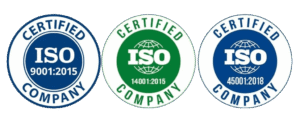Summary:
Australia’s shift toward a circular economy is significantly impacting industrial supply chains. Businesses must adapt to sustainable packaging, recycling requirements, and resource-efficient operations to remain compliant and competitive.
What’s New
Key elements affecting industrial supply chains include:
- Sustainable packaging requirements: Materials must be recyclable, reusable, or compostable.
- Waste reduction obligations: Businesses must minimize packaging waste throughout the supply chain.
- Resource efficiency standards: Optimized transport, storage, and handling reduce environmental impact.
- Reporting and compliance: Companies must track packaging usage and sustainability metrics in alignment with national targets.
These updates affect manufacturers, distributors, and logistics providers across Australia.
Why It Matters
The circular economy transition impacts industrial operations and strategy:
- Regulatory compliance: Businesses must meet 2025 packaging and sustainability standards.
- Cost efficiency: Optimized packaging and logistics reduce material and transport costs.
- Environmental responsibility: Reduces waste and carbon footprint throughout the supply chain.
- Competitive advantage: Companies embracing circular economy principles enhance reputation and market positioning.
Proactive adaptation ensures supply chains remain resilient and aligned with national sustainability goals.
Carewell’s Insight
Carewell supports industrial businesses in adapting supply chains to circular economy requirements:
- Eco-friendly and recyclable packaging solutions
- Consultation on supply chain optimization for sustainability
- Support for compliance reporting and circular economy initiatives
Explore our eco-friendly packaging solutions to future-proof your supply chain.
Looking Ahead
As Australia moves toward a fully circular economy, industrial supply chains will increasingly rely on sustainable packaging, efficient resource management, and compliance reporting. Early adoption ensures businesses stay ahead in operational efficiency, regulatory adherence, and environmental responsibility.
External Reference Links:










